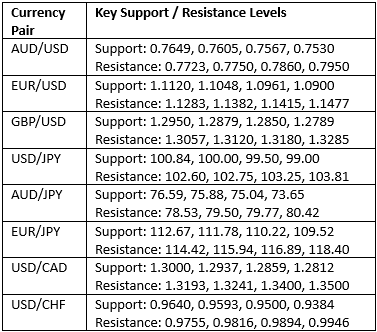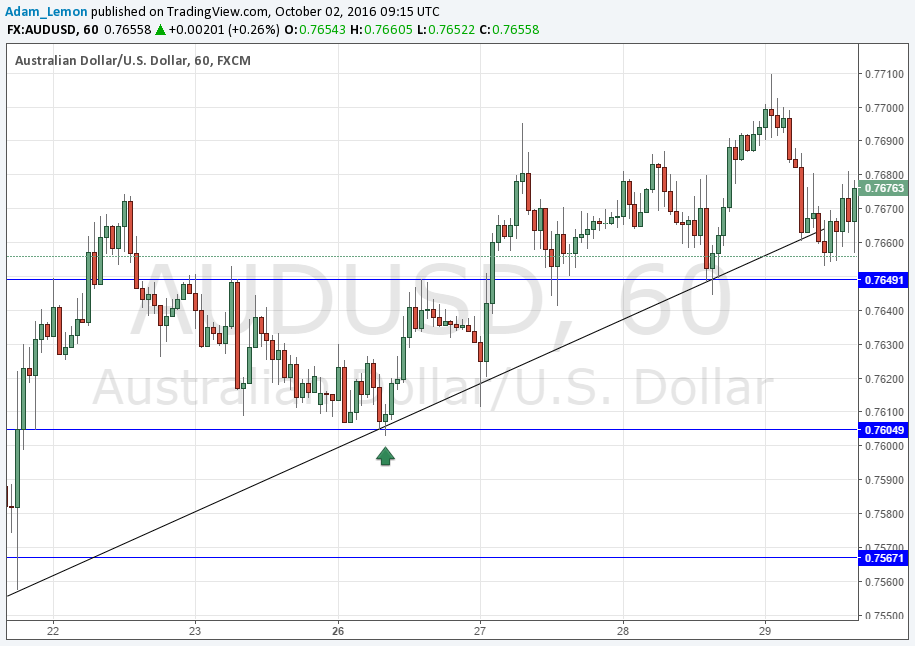This week we’ll begin with our monthly and weekly forecasts of the currency pairs worth watching. The first part of our forecast is based upon our research of the past 11 years of Forex prices, which show that the following methodologies have all produced profitable results:
Trading the two currencies that are trending the most strongly over the past 3 months.
Assuming that trends are usually ready to reverse after 12 months.
Trading against very strong counter-trend movements by currency pairs made during the previous week.
Buying currencies with high interest rates and selling currencies with low interest rates.
Let’s take a look at the relevant data of currency price changes and interest rates to date, which we compiled using a trade-weighted index of the major global currencies:
Monthly Forecast October 2016
This month we forecast that the highest-probability trade will again be long NZD/USD.:
Weekly Forecast 2nd October 2016
Last week, we made no forecast.
This week, we again make no forecast, as there were no strong counter-trend movements.
This week has been dominated by relative strength in the Australian Dollar, and relative weakness in the Japanese Yen, although the changes were very small.
Volatility was much less than it was during the previous week, with less than 4% of the major and minor currency pairs changing in value by more than 1%. It was an extremely quiet week overall. Volatility is likely to be higher over this coming week, which will be dominated by releases of U.S. economic data and central bank input from the RBA.
You can trade our forecasts in a real or demo Forex brokerage account.
Key Support/Resistance Levels for Popular Pairs
We teach that trades should be entered and exited at or very close to key support and resistance levels. There are certain key support and resistance levels that should be watched on the more popular currency pairs this week, which might result in either reversals or breakouts:
Let’s see how trading one of these key pairs last week off key support and resistance levels could have worked out:
AUD/USD
We had expected the level at 0.7605 might act as support, as it had acted previously as both support and resistance. Note how these “flipping” levels can work really well. The H1 chart below shows the how the price initially hit this level around the London open last Monday, a time which can be crucial for currency crosses or pairs involving the USD such as the AUD/USD currency pair. The price reversed immediately with a bullish doji candlestick marked by the green up arrow in the chart. This long trade gave a maximum reward to risk ratio of 8 to 1, if the stop had been placed just below the low of the entry candlestick.
You can trade our forecasts in a real or demo Forex brokerage account to test the strategies and strengthen your self-confidence before investing real funds.



